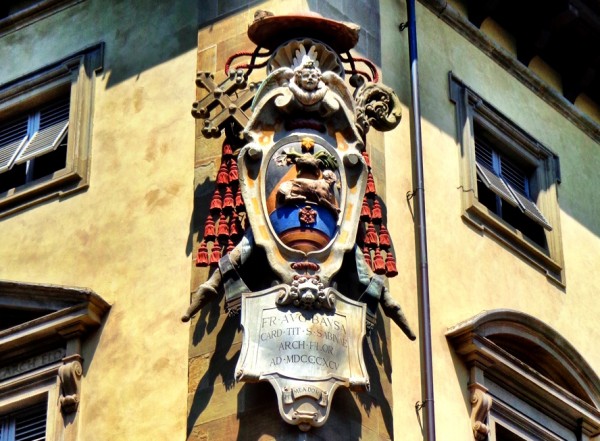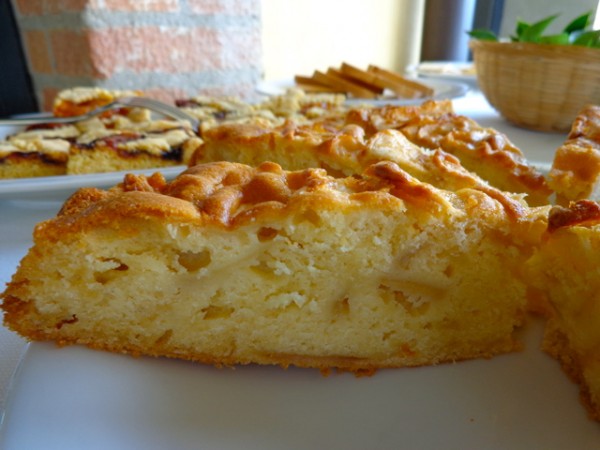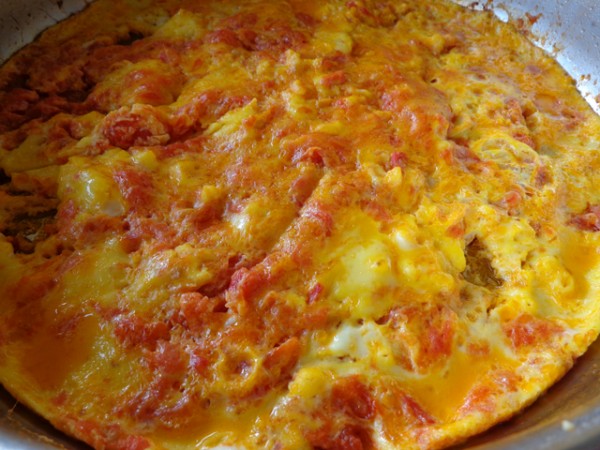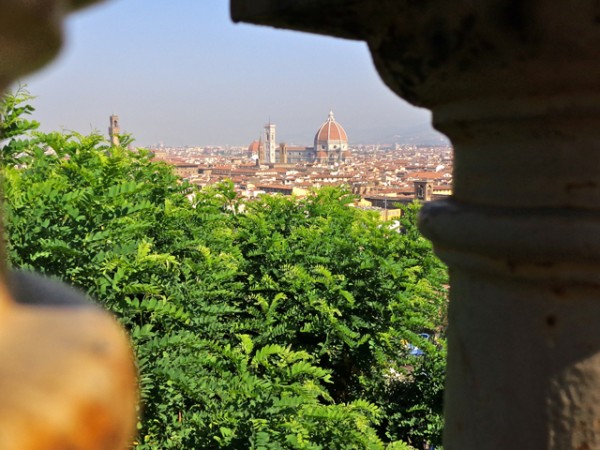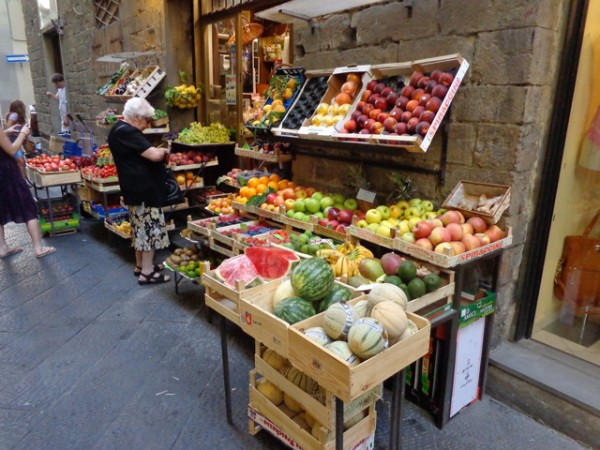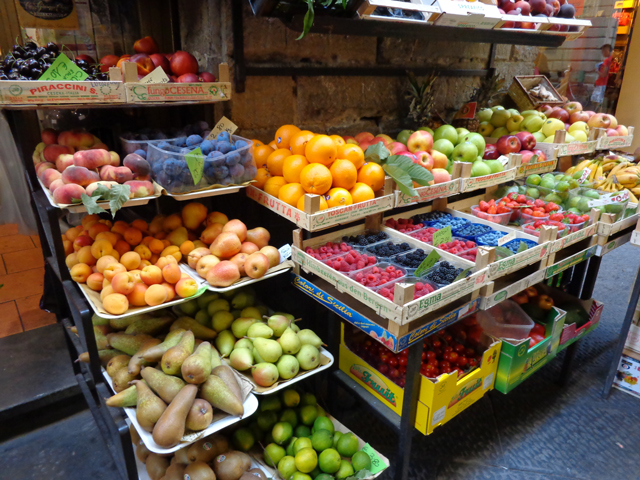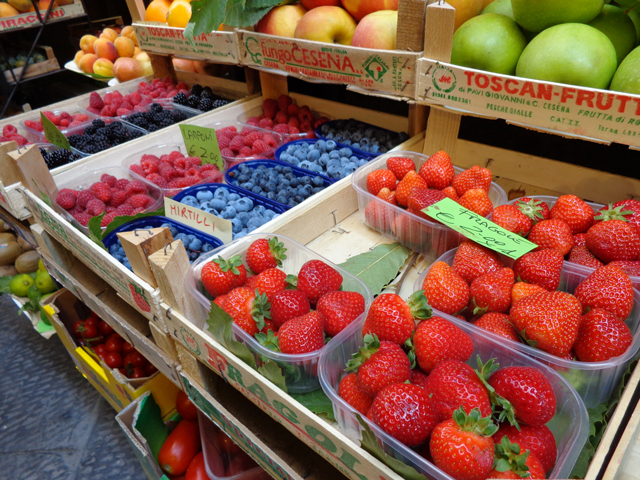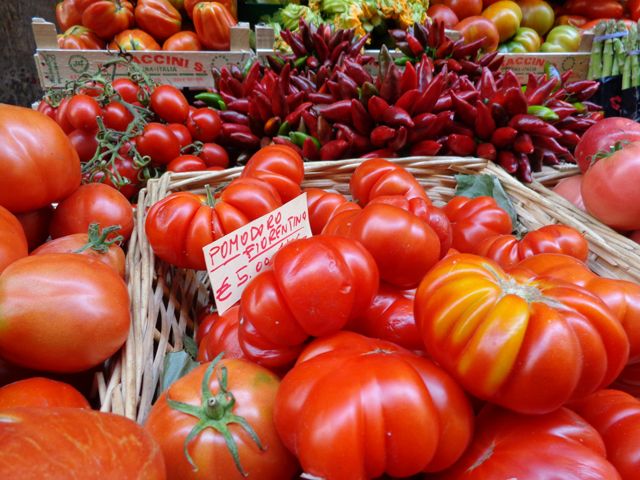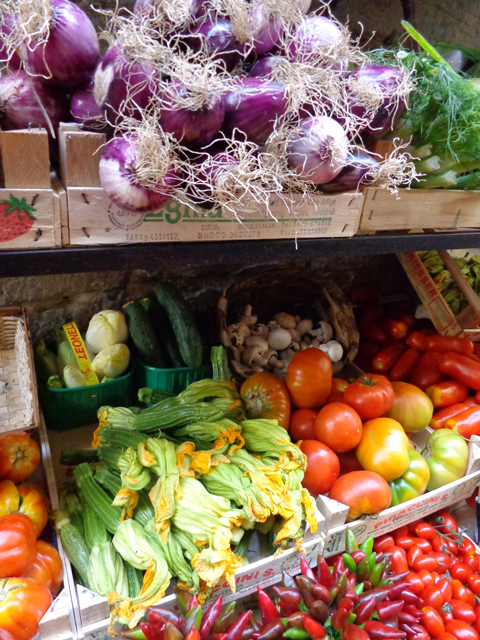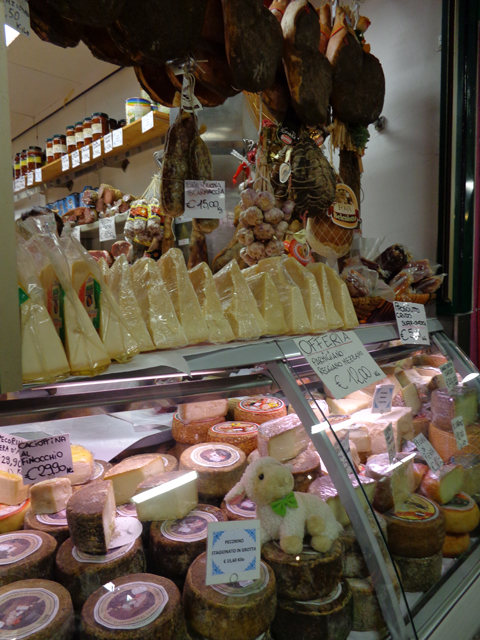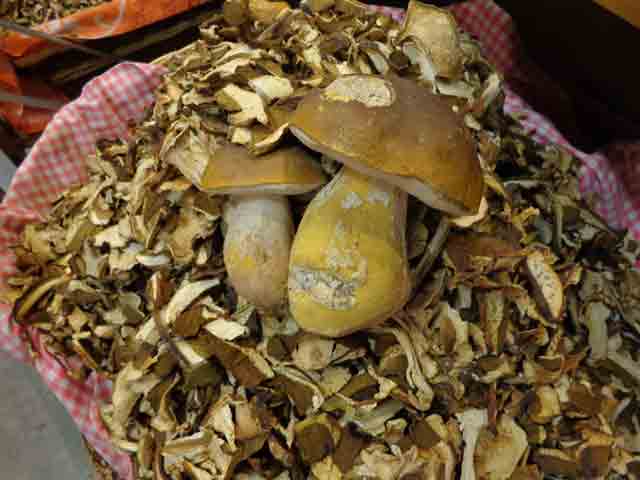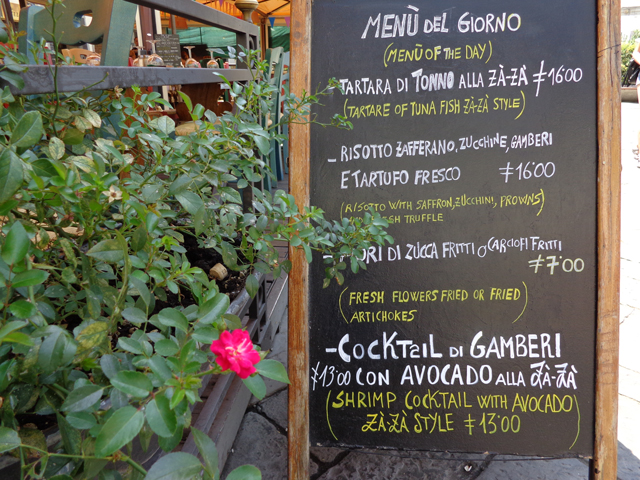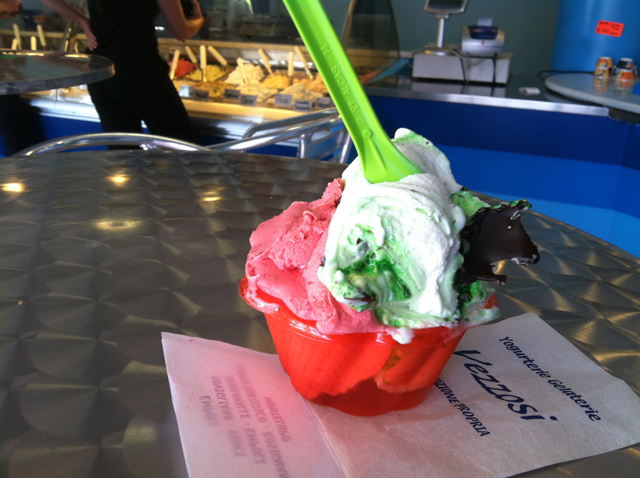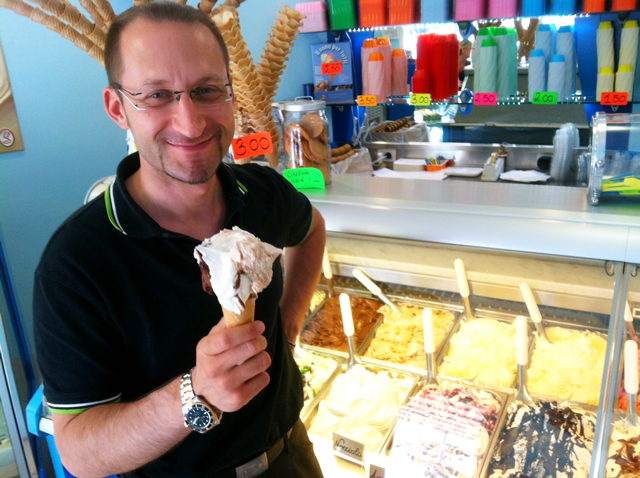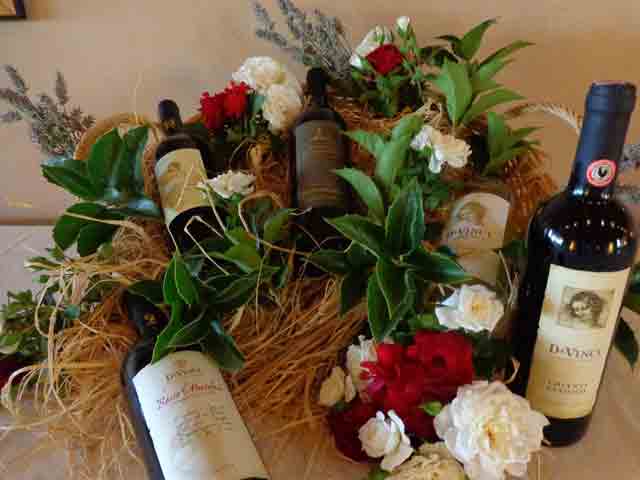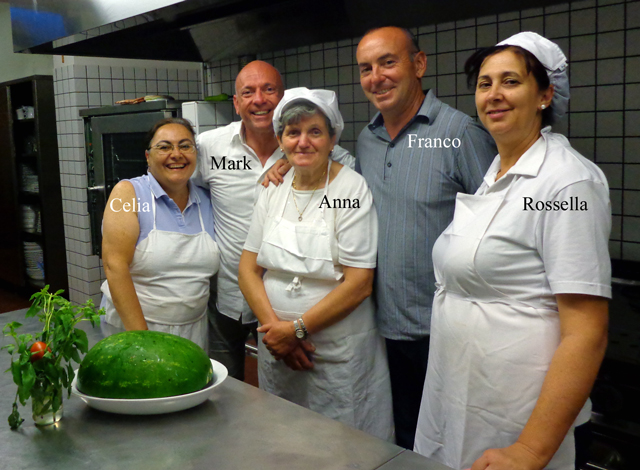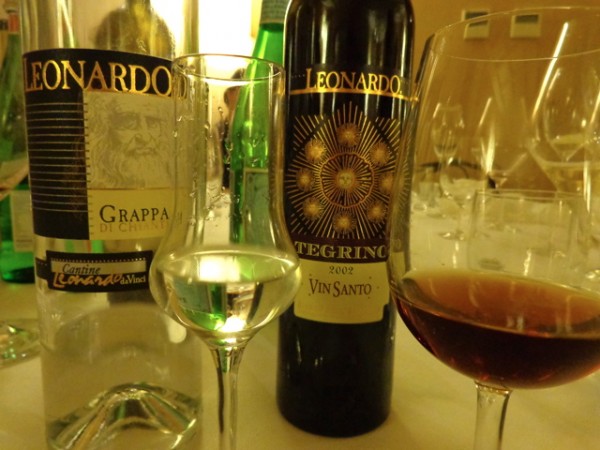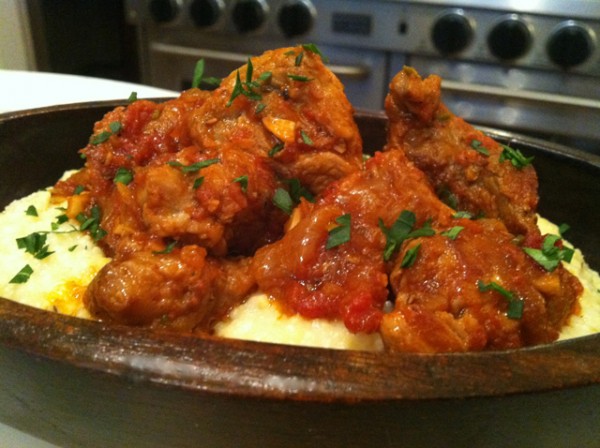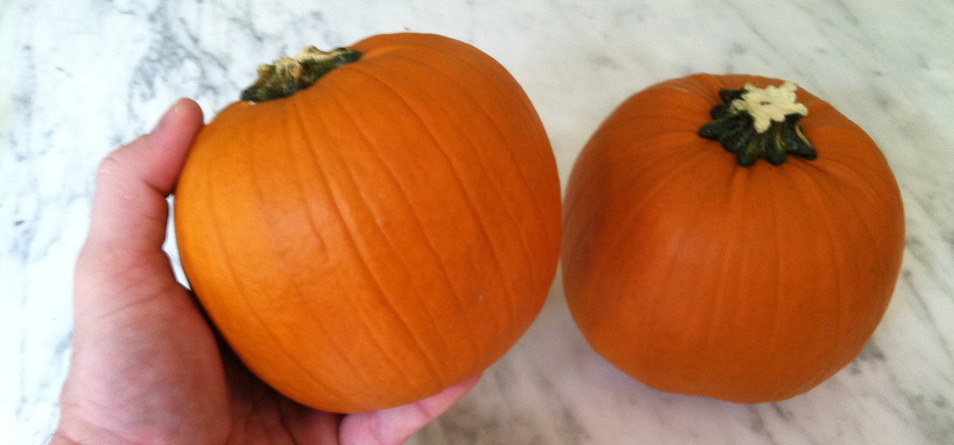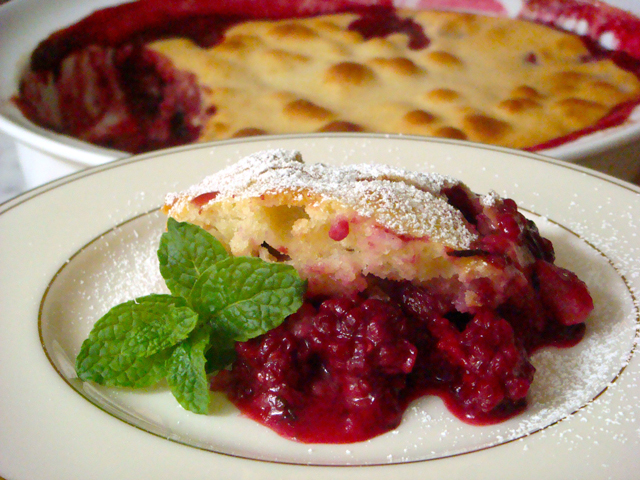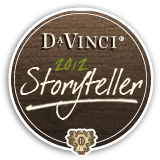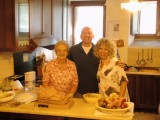An Italian Adventurer’s Journal
“It begins and ends with Florence.”
Waiting on the table for breakfast was a yogurt cake—except Anna had added apple and pear to it, just like the yogurt cake that Nonna first made for me in Viterbo when I lived with her family. Anna and I spoke about this cake my very first day here and now on my last day at the Casale she made her version of yogurt cake with apple and pear.
Anna’s act of making this yogurt cake is exactly what “food” means to me—it is a priceless gift. A gift of time, of thought, of imagination and of creation—one soul giving to another soul is nothing short of something sacred.
And this morning’s frittata?
A tomato frittata made with her garden tomatoes. Buonissima! –really delicious!
We traveled to Firenze –Florence– today and I am always ambivalent about Firenze. I was there on 9/11—my first trip to Italy. It was the catalyst for me falling in love with this country, its food and its people. That day in Florence began a roller coaster ride of food, cooking and life that is still going on 11 years later.
This was my third day trip to Florence, but in order to truly fall in love with this city as so many people have done, I think I may have to stay here for longer than just 6 hours at a time to truly experience its energy. So far, Firenze hasn’t made a deep impression on me—but I am not about to give up traveling here. If at first you don’t succeed, try, try, try, try again, right?
Of course, Rome is my town, so maybe this is like a “New York vs. Chicago” thing. I am from Chicago, so I never really feel the need to go to New York. Since I really like Rome, maybe I will never bond with Firenze.
[Subscribers, please click HERE to view the “View of Florence” video.]
Carolina had Filippo take us to a belvedere—the Piazzale Muchelangelo, which overlooks the city. From here, from anywhere around the city, the Duomo is an imposing presence. Besides the tower on City Hall, there is nothing that breaks the cityscape like the Duomo and its bell tower. You can go to the top of the Duomo and the bell tower and I highly recommend that you do—when in Italy, never miss an opportunity to go up!
At the Ponte Vecchio, Cathi, one of the other 2012 Storytellers, participated in the long tradition of the Lovers’ Lock. Legend has it that if you and your lover place a lock on the gate that surrounds the statue of goldsmith Benvenuto Cellini and then say a little prayer, before pitching the lock’s keys off of the bridge into the River Arno, then your love will be sealed forever.
Cathi had a lock with her initials and her boyfriend’s initials painted on it—it looked like nail polish to me. I guess that will do in a pinch! I followed her to the gate and captured it all. Click HERE to watch the video.
Walking from the Ponte Vecchio to the Mercato Centrale, Florence’s large central market, we passed a shop with the most vibrant looking produce I had ever seen. I wanted to buy it all, cook with it, and eat it immediately. Maybe if produce looked like this at the local grocery store we’d all be eating a lot more fruit and veggies.
This photo of tomatoes makes me think—“This whole photo would make some killer sauce!” And to think that tomatoes are not indigenous to Italy. They came back to Italy from the “New World” (“South America”) with the explorers. “Grazie, Cristoforo Colombo!” At first they were considered poisonous, then an aphrodisiac, and now I can’t see a tomato without thinking of Italy.
Since we were out shopping, I found myself inside a department store purchasing soap. Yes, I have thing for a particular brand of Italian soap that comes in a wide variety of particularly Italian scents. I decided that I wanted to leave some “parting gifts,” if you will, for everyone who has been so wonderful to us during our stay. I know soap may seem a little weird, but, like everything I have experienced this week, I want my gifts to be very particular—very particular in coming from me. I’ll have no way of knowing if people will appreciate them or not, but that isn’t the point—it is the thought that counts.
Going inside the Mercato Centrale was a sensory overload for me. Depending on where you live, you might be used to going to a local farmer’s market that has everything from meat to cheese, seafood to vegetables, and a couple of delis to order food. I don’t have that kind of thing where I live, so when I go into one, I want to taste and purchase everything.
[Subscribers, please click HERE to view the “Dried Fruit” video.]
The first vendor I came upon was selling dried fruit and they were as vibrant, if not more so, than the real ones I had passed a couple of blocks ago. The above video clip shows just how beautiful they were and, remember, we eat with our eyes before we eat with our mouths. I ended up buying some of the Pomelo (an Asian fruit), Pomodori (dried tomatoes but NOT sun-dried) and Ciliegie (Cherries).
The Pomodori were sweet almost like a cherry. Sun-dried tomatoes for me are so sweet that they are almost bitter, but these pomodori were not that instense. And, i ciliegie were sweet and just a little tart. I bought enough to eat on the plane home—I might as well try to extend my time here in Italy as long as possible and if that involves eating something Italian on the flight home, well, so be it.
Meats and cheeses are a staple at every Italian market and here is just a small sample of what was available.
[Subscribers, please click HERE to view the “Salumi” video.]
I was about four vendors from the porcini mushrooms when I started smelling them and, like the Sirens calling me upon the rocks, I was crashing right ashore after them! Sadly, it is impossible to find fresh porcini mushrooms in America. You can find them dried, so to reconstitute them: place the dried mushrooms in a bowl, cover with almost-boiling water. Place a small plate on the porcini to keep them submerged in the bowl. Let them soak for about 20 minutes. Remove the plate, strain off the liquid through a fine sieve or paper coffee filter, reserving the liquid for use in the recipe. Use them as you would any other mushroom and add the reserved, strained liquid to really enhance the porcini flavor.
Lunch was practically right next door to market, at a funky ristorante called Za-Za. I say it was funky because the interior was an eclectic mix of furniture pieces and accessories and then the murals on the walls, mamma mia! The Muses danced on the ceiling above our table.
[Subscribers, please click HERE to view the “Za Za” video.]
After lunch, we headed back to the Casale, but we made one last detour to the favorite gelatoria that we had visited on Tuesday. When I walked in, the woman behind the counter recognized me, grabbed the same size cup that I had ordered back on Tuesday and then asked, “Lamponi e Menta, anche?” –“Raspberry and Mint, again?” How did she remember me and my order from 3 days ago?
“Certo!” I said, and before I knew it I had my gelato before everyone else had entered the gelatoria.
I was stunned, even Filippo, our fantastic driver this past week, ordered gelato. This entire week, while I have been eating everything in sight like Godzilla destroying a fishing village, Filippo has been the example of control. I understand and appreciate his not drinking at any of the meals this past week—he was driving us everywhere—but he also didn’t eat as often or nearly as much as any of us. I have been giving him a hard time about not making me look good, since he and I have been the only men on most of the excursions, and he has not been indulging like I have.
“Oddio! No lo credo. Mangi gelato oggi. Sei male?” –“Goodness! I don’t believe it. You are eating gelato today. Are you sick?” I said, giving Filippo a hard time.
He just smiled and chuckled. Yes, he will have the last laugh while I am trying to back my fat fanny into the seat for my flight home!
Actually, if I lived in Italy I would not eat like I do while I am there on vacation. On vacation I feel like I don’t want to miss out on anything—not one smell, sight or taste. This means that I eat every course at every meal, always trying something new. I want to approach Italy running—and like a starving Godzilla.
When we arrived back at the house, Franco had done a table arrangement for our farewell group dinner tonight. He picked all of the flowers from around the property and that goes for the greenery and the lavender, too. I was quite impressed at his attention to the finer details.
Anna—and I have no doubt that Celia, Franco and Rossella helped out, too—prepared the feast tonight. I call it a feast because, even though it was classic Italian antipasti buffet food, she really pulled out the stops.
Here is a video of what Anna prepared. Forgive my Italian, I tried as best I could in a kitchen full of non-English speaking Italians.
[Subscribers, please click HERE to view the “Final Meal” video.]
We all had a glorious time. Anna’s food was buonissimi and the wine was buonissimi also. In fact, we started with DaVinci Prosecco, then on to the Pinot Grigio, then through the reds (I had the Brunello di Montalcino) and then after dinner we broke out the DaVinci Vin Santo and Grappa. It was a perfect evening of conversation, food, wine, laughter—and new friends!
Here is the 3rd and last video in my series of three for my 2012 DaVinci Wine Storyteller Experience, entitled “Good People”:
[Subscribers, please click HERE to view the “Good People” video]
Buon Appetito~
Mark
*Here is my favorite fall and winter wine recipe that I learned in Italy from Angiola Maria Novello Bonomi (Nonna). I like it so much that I put it in my book. You can use either white or red wine in the recipe, but you should definitely drink a hearty red, like the Brunello di Montalcino with it:
Spezzatino della Nonna con Polenta
Veal Tips with Polenta
Veal Tips:
3 tablespoons extra virgin olive oil
1 tablespoon unsalted butter
1 small onion, finely minced
1 large garlic clove, finely minced
1 ½ pounds veal top round, cut into 1-inch cubes (beef tips or stew meat may be substituted)
1 cup dry white wine (red is preferred if using beef tips)
1 teaspoon salt, or more to taste
½ teaspoon freshly ground black pepper, or more to taste
6 whole, peeled canned Italian plum tomatoes, (if using fresh plum tomatoes, run them through a food mill to remove the skins)
1 tablespoon finely chopped fresh rosemary, stems removed
In a large pan over medium heat, heat the oil and butter until the butter has melted and is bubbling. Add the onion and veal tips, and cook until browned, 8 to 10 minutes. Add the garlic, stirring until combined, and cook for 1 minute. Add the wine, scraping the browned pieces from the bottom of the pan, and cook until the wine as almost evaporated, 3 to 4 minutes. Add the salt and pepper. Place the tomatoes into a small bowl, and using your hand, crush them into small pieces. Add the rosemary and crushed tomatoes (and their juices) to the pan, mixing until well combined. Lower the heat, cover the pan, and simmer for 35 to 40 minutes, stirring occasionally, until the meat is tender. If the sauce starts to thicken or dry out too much, add a tablespoon of hot water at a time while stirring.
Polenta:
10 cups water
1 tablespoons salt
3 cups yellow polenta, medium-grind
1 cup freshly grated Parmigiano-Reggiano or Pecorino Romano cheese, or more to taste
In a large pot, bring the water to a boil over medium heat. Stir in the salt and as the water starts to come up to a boil again, lower the heat slightly and, using a whisk, slowly pour in the polenta in a thin stream, whisking it into the water, always whisking in the same direction to help prevent lumps. When the cornmeal is completely incorporated into the water, switch to using a wooden spoon and stir the polenta, crushing any lumps against the side of the pan to remove them. If the polenta is boiling or spitting too much, lower the heat a little at a time, until it sputters without coming out of the pot. As the polenta cooks it will thicken. Cook the polenta, stirring frequently, for 25 to 30 minutes until it is thick and starts to pull away easily from the sides of the pan. Turn off the heat and stir in the cheese.
Spoon the hot polenta into serving dishes and top with the veal tips and some of their sauce. Makes 6 servings.
Wondering what to do with the leftover polenta?
Pour the extra polenta onto a 9-inch x 13-inch baking sheet and spread until it is level. Let the polenta cool for 10 to 15 minutes and cover with plastic wrap to keep a skin from developing. When the polenta has cooled, using a knife dipped in water, cut the polenta into 3-inch squares and place in layers, separated by parchment paper, in an airtight container in the fridge. Leftover polenta slices can be grilled, pan-fried in some olive oil, or layered with sugo and mozzarella, and baked in a casserole.
